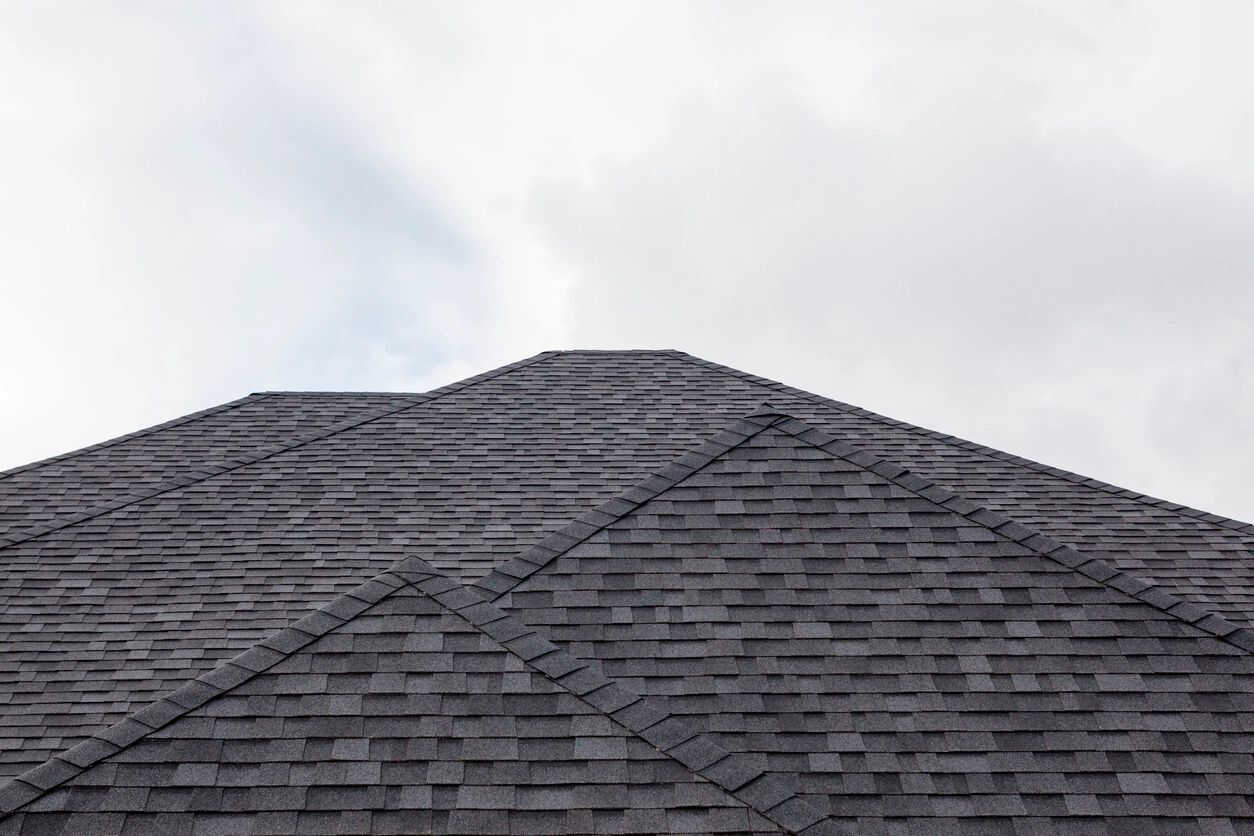Summary:
Signs Your Shingles Need Attention
Your Franklin County roof displays distress signals that become more pronounced with each seasonal transition. Curling shingle edges develop when repeated freeze-thaw cycles cause the asphalt base to lose flexibility, creating gaps where wind-driven rain penetrates to the roof deck below. Cracked shingles appear as hairline fractures that widen over time, particularly visible after harsh winters when brittle asphalt splits under thermal stress. Granule loss becomes evident in your gutters—these ceramic-coated mineral particles protect against UV damage and water infiltration, so their absence leaves your roof vulnerable to accelerated aging. Dark algae streaks create more than aesthetic concerns; they form when Gloeocapsa magma bacteria feeds on limestone filler in shingles, creating moisture-retaining colonies that prevent proper drying and increase surface temperatures by 15-20°F, forcing your air conditioning system to work harder throughout Franklin County’s humid summers.
The Role of Shingle Restoration
Modern shingle restoration employs bio-based penetrating oils that rejuvenate weathered asphalt at the molecular level, restoring the flexibility that prevents cracking during temperature fluctuations. The process involves application of acrylic elastomeric coatings containing titanium dioxide pigments that reflect solar heat while maintaining superior adhesion to existing shingle surfaces. Unlike temporary fixes, restoration reactivates dormant plasticizers in aged asphalt, returning shingles to near-original performance specifications while adding a protective membrane that bonds permanently with the substrate beneath.
Benefits of Roof Shingle Preservation
Modern shingle restoration employs bio-based penetrating oils that rejuvenate weathered asphalt at the molecular level, restoring the flexibility that prevents cracking during temperature fluctuations. The process involves application of acrylic elastomeric coatings containing titanium dioxide pigments that reflect solar heat while maintaining superior adhesion to existing shingle surfaces. Unlike temporary fixes, restoration reactivates dormant plasticizers in aged asphalt, returning shingles to near-original performance specifications while adding a protective membrane that bonds permanently with the substrate beneath.
Effective Roof Renewal Techniques
Professional roof renewal begins with soft-wash cleaning systems that use biodegradable surfactants and controlled water pressure below 100 PSI to remove contaminants without damaging shingle integrity. Following thorough cleaning, technicians apply penetrating sealers formulated with modified silicone resins that create flexible waterproof barriers while allowing vapor transmission to prevent moisture entrapment. The process includes detailed inspection and treatment of vulnerable areas using butyl rubber mastics around nail penetrations and polyurethane sealants along ridge lines and valleys. Advanced treatment formulations incorporate UV-stable polymers that maintain flexibility through Franklin County’s temperature extremes, plus biocide packages containing quaternary ammonium compounds that prevent organic growth for extended periods. Quality restoration concludes with application of reflective topcoats containing aluminum oxide particles that enhance solar reflectance while providing additional protection against hail damage and wind uplift.
Choosing the Right Roof Rejuvenation Service
Professional restoration requires specialized training in material compatibility and application techniques that vary significantly between shingle manufacturers and age groups. Quality contractors use thermal imaging equipment to identify hidden moisture damage and structural issues before beginning treatment, preventing costly surprises during the restoration process. They provide detailed condition assessments documenting current shingle status, recommended treatments, and realistic performance expectations backed by transferable warranties that protect your investment throughout ownership changes in Franklin County’s active real estate market.
Maintaining Your Roof Post-Restoration
Post-restoration care focuses on protecting the investment through proactive maintenance that preserves coating integrity and performance. Annual inspections should include gutter cleaning to monitor granule shedding, debris removal from valleys and penetration areas, and visual assessment of coating adhesion and color consistency. Maintain proper attic ventilation to prevent ice dam formation during Franklin County winters, and trim overhanging branches to reduce organic debris accumulation that feeds moisture-loving organisms capable of compromising restoration effectiveness over time.
Take Action for a Longer-Lasting Roof
Franklin County homeowners who act on these warning signs early can transform aging roofs into reliable protection systems that withstand decades of weather challenges. Professional restoration not only extends roof life significantly but also reduces energy costs, prevents emergency repairs, and maintains the property values that make your home a sound investment. Contact us today for a detailed roof assessment that identifies specific restoration needs and provides a clear roadmap for maximizing your roof’s remaining lifespan while protecting your family and investment.

